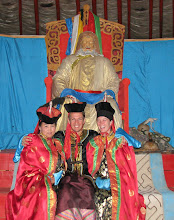Bellacoola
Bellacoola

The Bella Coola are one of the many tribes of the Pacific Northwest, residing along the banks of the Bella Coola River, which runs from high in the Rocky Mountains to the Pacific Ocean in British Columbia, Canada. The confluence of the river and ocean, the Bella Coola built a huge permanent village of cedar plank houses. Many of the homes and doorways were adorned with pole carvings of totems that illustrated the dwellers clan and history.
The proximity to water and an abundant supply of salmon fed the Bella Coola well, especially when the salmon would embark on their annual run upstream to spawn and the tribesmen would set their nets. The nets also produced the candlefish, which provided an essential oil for the tribe, as it was good for trade with inland tribes for furs and buckskins. When the salmon weren't running the men would go inland to hunt game or hunt the coastline for other edibles such as seals, ducks and geese, sometimes hunting from large dugout canoes used to travel the river and ocean. During the growing season, the women would gather nuts, berries and plants to supplement the diet.
Centuries ago, the Bella Coola men often wore no clothing, and the women just a skirt made from cedar bark. With the rainy climate, all often wore capes also woven from cedar bark, sometimes several layers thick for warmth.
Life among the Bella Coola meant many a potlatch ceremony. This event celebrated important events such as marriages, births, initiations, name giving or even a death. The potlatch also was a way for the Bella Coola to honor the supernatural beings they believed haunted the earth during warm weather, but returned to their home in the sky during winter months. The masked-adorned dancers and singers would celebrate potlatch for days and often the host of the ceremony would feel compelled to outdo the last celebration by giving more impressive gifts to his guests, as "giveaway" is a large part of the event. Copper, shell and blankets were status symbols in the past, and many of these same gifts are given today.
Beginning toward the end of the 18th century and continuing for a steady year, the Bella Coola saw many changes. European explorers, a Methodist missionary, gold seekers, fur trappers and colonists from far away Norway all descended upon tribal lands during this century. Visitors brought disease and alcohol, which led to serious substance abuse problems among the Bella Coola. By the time they were put upon by the logging trade at the beginning of the 20th century, many were dead or alcoholic.
Surviving Bella Coola still reside on a reservation in British Columbia.


0 Comments:
Post a Comment
Subscribe to Post Comments [Atom]
<< Home